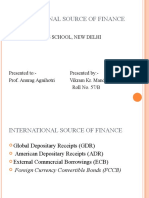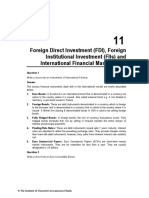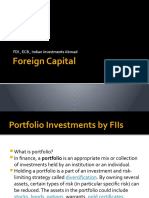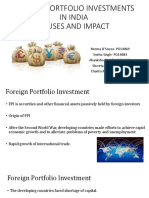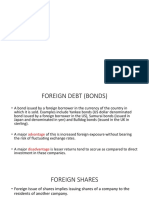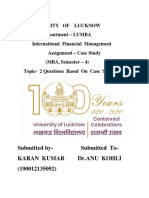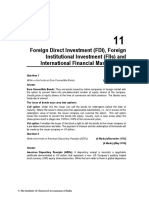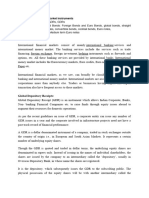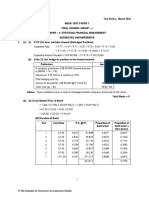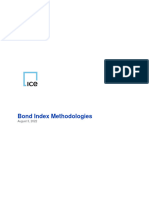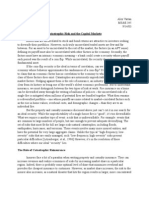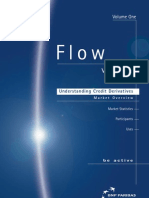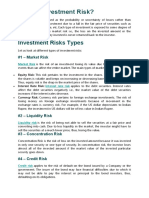0% found this document useful (0 votes)
78 views32 pagesCA Final Strategic Financial Management, Paper 2 Chapter 11 CA Tarun Mahajan
This document provides information on various types of international financing options available to Indian companies, including:
1) Foreign Direct Investment (FDI), where a foreign company directly invests in India by setting up a subsidiary or joint venture. This allows the foreign company to provide technology, skills, and brand name to India.
2) Foreign Institutional Investment (FII), which involves foreign investors purchasing shares of listed Indian companies or bonds. This is a portfolio investment.
3) Global Depository Receipts (GDRs) and American Depository Receipts (ADRs), which allow Indian companies to issue rupee-denominated shares and list on foreign exchanges to raise funds from overseas investors.
4
Uploaded by
Prasanni RaoCopyright
© © All Rights Reserved
We take content rights seriously. If you suspect this is your content, claim it here.
Available Formats
Download as PDF, TXT or read online on Scribd
0% found this document useful (0 votes)
78 views32 pagesCA Final Strategic Financial Management, Paper 2 Chapter 11 CA Tarun Mahajan
This document provides information on various types of international financing options available to Indian companies, including:
1) Foreign Direct Investment (FDI), where a foreign company directly invests in India by setting up a subsidiary or joint venture. This allows the foreign company to provide technology, skills, and brand name to India.
2) Foreign Institutional Investment (FII), which involves foreign investors purchasing shares of listed Indian companies or bonds. This is a portfolio investment.
3) Global Depository Receipts (GDRs) and American Depository Receipts (ADRs), which allow Indian companies to issue rupee-denominated shares and list on foreign exchanges to raise funds from overseas investors.
4
Uploaded by
Prasanni RaoCopyright
© © All Rights Reserved
We take content rights seriously. If you suspect this is your content, claim it here.
Available Formats
Download as PDF, TXT or read online on Scribd
/ 32








